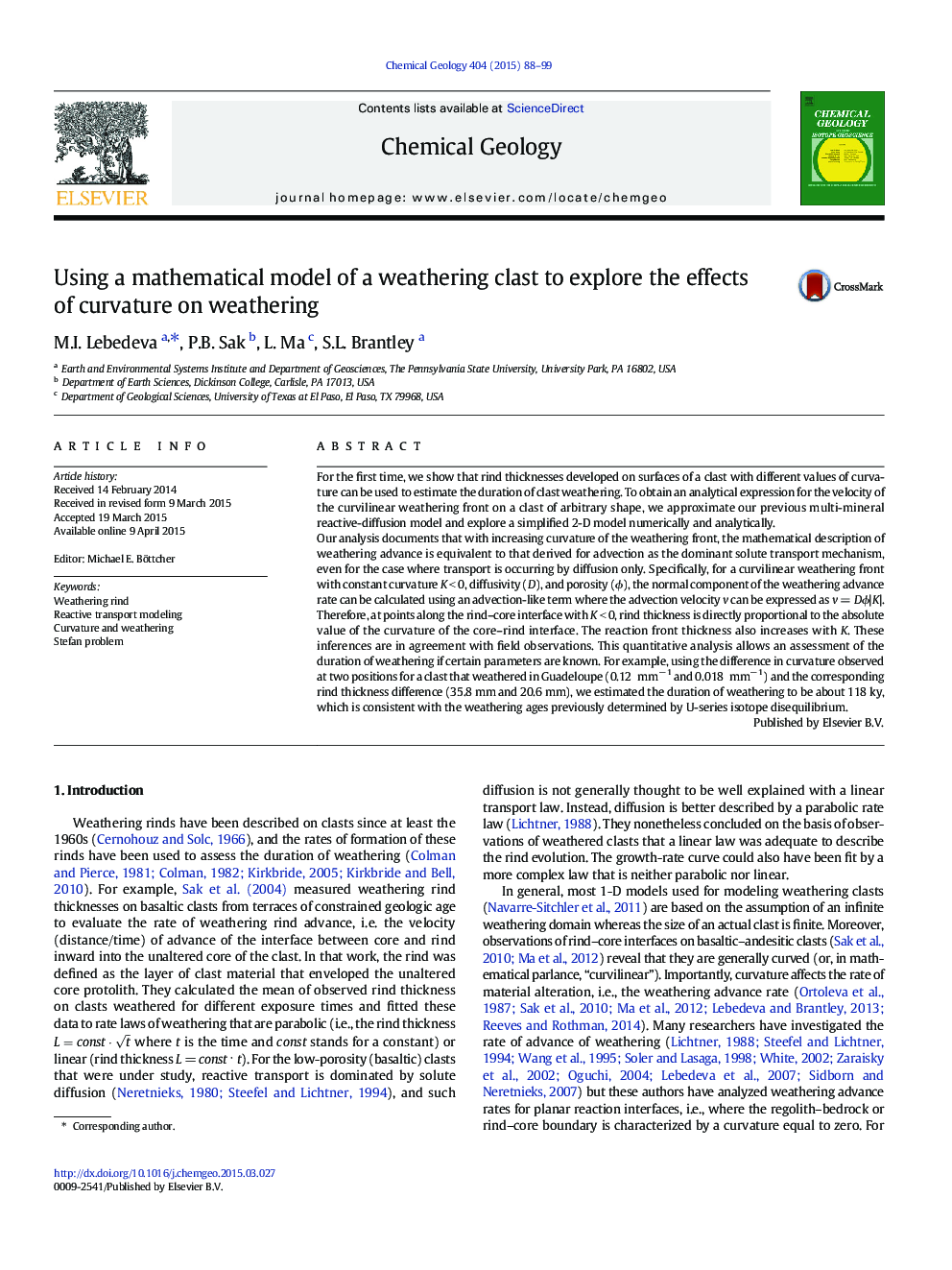| Article ID | Journal | Published Year | Pages | File Type |
|---|---|---|---|---|
| 4698510 | Chemical Geology | 2015 | 12 Pages |
•We performed a 2-D numerical and analytical investigation of weathering clasts.•The weathering front of a clast becomes curvilinear over time.•We analyze the effect of curvature on weathering.•The curvature of the weathering front affects its velocity.•Effect of curvature transforms the parabolic weathering rate law to the linear law.
For the first time, we show that rind thicknesses developed on surfaces of a clast with different values of curvature can be used to estimate the duration of clast weathering. To obtain an analytical expression for the velocity of the curvilinear weathering front on a clast of arbitrary shape, we approximate our previous multi-mineral reactive-diffusion model and explore a simplified 2-D model numerically and analytically.Our analysis documents that with increasing curvature of the weathering front, the mathematical description of weathering advance is equivalent to that derived for advection as the dominant solute transport mechanism, even for the case where transport is occurring by diffusion only. Specifically, for a curvilinear weathering front with constant curvature K < 0, diffusivity (D), and porosity (ϕ), the normal component of the weathering advance rate can be calculated using an advection-like term where the advection velocity v can be expressed as v = Dϕ|K|. Therefore, at points along the rind–core interface with K < 0, rind thickness is directly proportional to the absolute value of the curvature of the core–rind interface. The reaction front thickness also increases with K. These inferences are in agreement with field observations. This quantitative analysis allows an assessment of the duration of weathering if certain parameters are known. For example, using the difference in curvature observed at two positions for a clast that weathered in Guadeloupe (0.12 mm− 1 and 0.018 mm− 1) and the corresponding rind thickness difference (35.8 mm and 20.6 mm), we estimated the duration of weathering to be about 118 ky, which is consistent with the weathering ages previously determined by U-series isotope disequilibrium.
